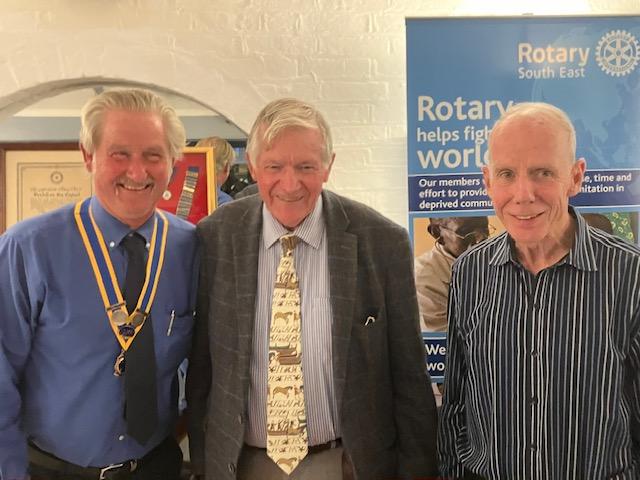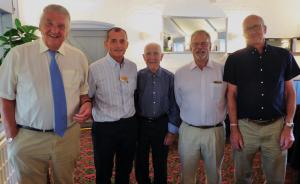Speaker - Partners - Speaker - Robert Chase - 1066 The Real Story
Tue, Sep 17th 2024 at 7:00 pm - 9:00 pm
A great opportunity to discover the truth about 1066

Club members please log in for more information.
Bexhill Rotary Club Discovers the Real 1066.
What really happened locally in October 1066 and what were it’s origins and repercussions? All was revealed by retired diplomat and amateur historian Robert Chase in an enthralling talk given to Bexhill Rotarians recently.
Robert started by explaining that the future King Harold II, a member of the Godwin family of English nobles, owned extensive lands in Sussex. He told us of Harold’s shipwreck in France and rescue by William, with whom he served as an army commander and swore to assist to gain the kingship of England, before being allowed to return home. In January 1066 King Edward the Confessor of England died and was reported to have bequeathed the English throne to Harold on his deathbed despite Edward having been brought up in Normandy whilst in exile and having close ties with the Norman aristocracy.
Not only William but also the Norwegian ruler, Harold Hardrada, had their eyes on the kingship and Hardrada, supported by Harold II’s estranged brother Tostig, invaded the north of England and defeated a northern army. However, Harold marched north and decisively beat the invaders in the Battle of Stamford Bridge on 25 th September. Both Harold Hardrada and Tostig were killed. As he rested from his successful battle Harold learned that William had landed at Pevensey and was ravaging his lands in Sussex; he had also established a foothold and was erecting wooden castles that he had shipped over from Normandy.
Immediately Harold marched the 270 miles back and, on 14 th October, set up his troops on Senlac Hill.
William had prepared meticulously for the invasion. He had sought the blessing of the Pope (an important precaution in mediaeval times) and assistance from numerous rulers throughout western Europe. Thus he was able to gather a huge fleet bringing 2,000 cavalry, 800 archers as well as 2,000 infantry as well as the prefabricated wooden castles.
Cavalrymen and archers were a new addition to warfare of those times whereas Harold’s army consisted of 2,000 housecarls armed with their fearsome battleaxes which could cut down men and horses alike and he also had many militia men bringing up his army to about 5,000.
The main defence strategy of the English was the shield wall which served them well when the Normans attacked. Harold could have waited before challenging the Normans and this would have enabled his troops to rest as well as putting a strain on William’s ability to provision his forces. However, he did not hold back and the battle raged all day until, as some of Williams Breton troops fled, the English, sensing victory, broke their shield wall to rush after the fleeing Bretons – this enabled the Norman cavalry to attack and cut down the English pursuers.
With the aid of their archers firing up over the shield wall, gradually the Normans made their way up the hill and overcame Harolds housecarls. Many of the militia ran and tried to lose themselves in the dense forests of the Sussex Weald. Harold was cut down and killed and the rest, as they say, is history.
Patrick Donaldson gave the Vote of Thanks
'What We Do' Main Pages:
This is a summary of the Club's activities for the last quarter. The document is in PDF format so make sure you have Adobe Acrobat Reader installed to enjoy it.
moreClub Management.
moreRaises Money for our Community and Rotary Charities
more
Our club web site now provides a full history of our club but the following gives an overview of previous years.
more



